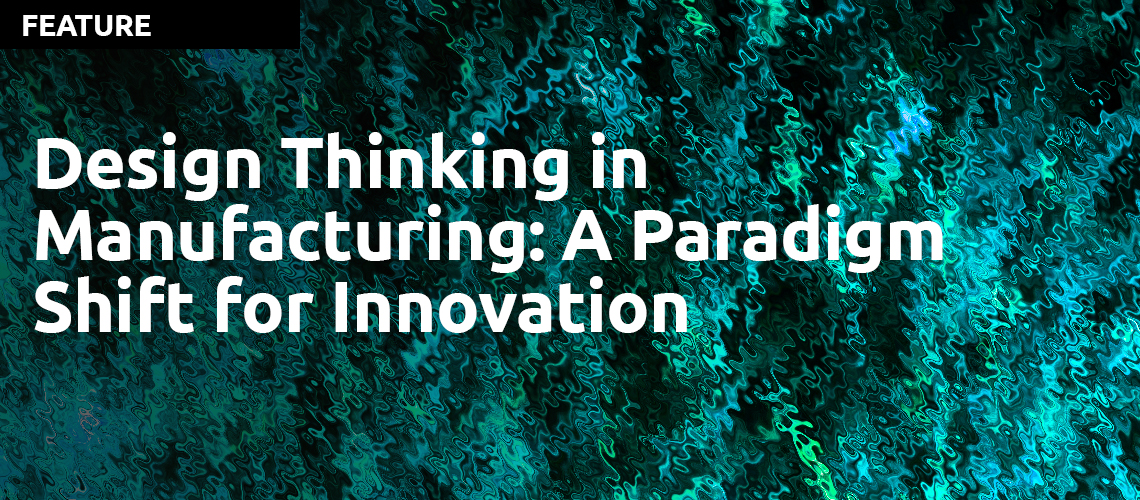
Design thinking, a human-centric approach to problem-solving and innovation, has transcended traditional design domains and found a profound application in the manufacturing sector. This article explores how design thinking is reshaping the landscape of manufacturing, fostering innovation, improving processes, and enhancing product development. Through specific examples from notable companies and their projects, we'll delve into the transformative impact of design thinking on the manufacturing industry. It should be noted that in some of the examples, it is clear that the principles they used were those of design thinking, but there is sometimes no actual evidence that they actually used the methodology of design thinking. However, the examples do illustrate how you could approach your manufacturing problems from a design thinking perspective.
Understanding Design Thinking in Manufacturing:
At its core, design thinking is about empathy, ideation, collaboration and iteration – principles that align seamlessly with the multifaceted challenges faced by the manufacturing sector. The traditional manufacturing approach often involves optimizing processes for efficiency and cost-effectiveness. However, design thinking introduces a holistic perspective that places equal importance on understanding the end-user, fostering creativity, and adapting to changing requirements.
-
User-Centric Product Design:
- Apple and the iPhone
- Apple's approach to designing the iPhone exemplifies the integration of design thinking in manufacturing. The user-centric focus starts with empathizing with the needs and desires of consumers. Through extensive user research, Apple identifies pain points, preferences, and aspirations, informing the design process from the very beginning. The iterative nature of design thinking allows for continuous refinement based on user feedback, leading to the creation of products that not only meet functional requirements but also resonate with users on an emotional level.
- Apple and the iPhone
-
Process Optimization and Efficiency:
- Toyota Production System (TPS)
- While Toyota is not traditionally associated with design thinking, the principles of design thinking are embedded in the Toyota Production System (TPS). TPS emphasizes continuous improvement, waste reduction, and respect for people. Through iterative problem-solving and employee involvement, TPS embodies design thinking principles, resulting in a highly efficient and adaptable production system. The focus on eliminating waste and empowering workers aligns with the collaborative and iterative nature of design thinking.
- Toyota Production System (TPS)
-
Innovative Supply Chain Management:
- Nike's Circular Design Guide
- Nike has embraced design thinking to revolutionize its supply chain management. With the Circular Design Guide, Nike aims to create a closed-loop system where products are designed with end-of-life considerations. This approach involves rethinking the entire product lifecycle, from materials sourcing to disposal, and encourages innovative solutions that reduce waste. Design thinking principles guide Nike in creating a more sustainable and circular supply chain, aligning with evolving consumer expectations for eco-friendly products.
- Nike's Circular Design Guide
-
Humanizing Industrial Processes:
- Siemens and Human-Robot Collaboration
- Siemens, a global industrial manufacturing company, has integrated design thinking principles into the development of collaborative robotics. By emphasizing human-robot interaction, Siemens aims to create robotic systems that work seamlessly alongside human workers, enhancing productivity and safety. The design thinking approach involves understanding the needs and preferences of workers, iterating on prototypes, and optimizing the collaboration for maximum efficiency and user satisfaction.
- Siemens and Human-Robot Collaboration
-
Customization and Personalization:
- Adidas Speedfactory
- Adidas has ventured into the realm of design thinking with its Speedfactory concept. This innovative approach to manufacturing involves leveraging advanced technologies for localized, on-demand production. The Speedfactory enables customization and personalization of athletic shoes, responding to individual preferences and market demands. The design thinking principles of empathy and iteration are evident in the emphasis on understanding diverse consumer needs and continuously refining the manufacturing process to meet those needs.
- Adidas Speedfactory
-
Lean Manufacturing and Design Thinking Integration:
- Boeing's Dreamliner Project
- Boeing's Dreamliner project represents a fusion of lean manufacturing and design thinking. The aircraft's development involved collaboration across disciplines, including design, engineering, and manufacturing. Design thinking principles informed the iterative design process, ensuring that the Dreamliner not only met technical specifications but also prioritized passenger comfort and fuel efficiency. The integration of lean manufacturing principles complemented design thinking, resulting in a groundbreaking and efficient aircraft.
- Boeing's Dreamliner Project
Challenges and Opportunities:
While the integration of design thinking in manufacturing brings about transformative benefits, it is not without its challenges. The traditional manufacturing mindset, rooted in efficiency and standardization, may initially resist the more exploratory and user-centric aspects of design thinking. However, companies that successfully navigate this transition find themselves better equipped to address evolving consumer preferences, market dynamics, and sustainability considerations.
Furthermore, the adoption of design thinking in manufacturing opens up new opportunities for collaboration and cross-disciplinary innovation. Designers, engineers, and manufacturing professionals can work together seamlessly, breaking down silos and fostering a culture of continuous improvement. The iterative nature of design thinking also enables companies to stay agile in the face of technological advancements and rapidly changing market demands.
Conclusion:
In conclusion, the incorporation of design thinking principles in manufacturing represents a paradigm shift that transcends traditional approaches. From user-centric product design to process optimization, supply chain management, and innovative collaborations, design thinking is redefining how products are conceptualized, developed, and brought to market. Companies that embrace this transformative approach not only stay competitive in a dynamic market but also contribute to the evolution of manufacturing practices toward more sustainable, efficient, and human-centered solutions. As the manufacturing industry continues to evolve, design thinking stands as a beacon for creativity, adaptability, and user-centric innovation.
